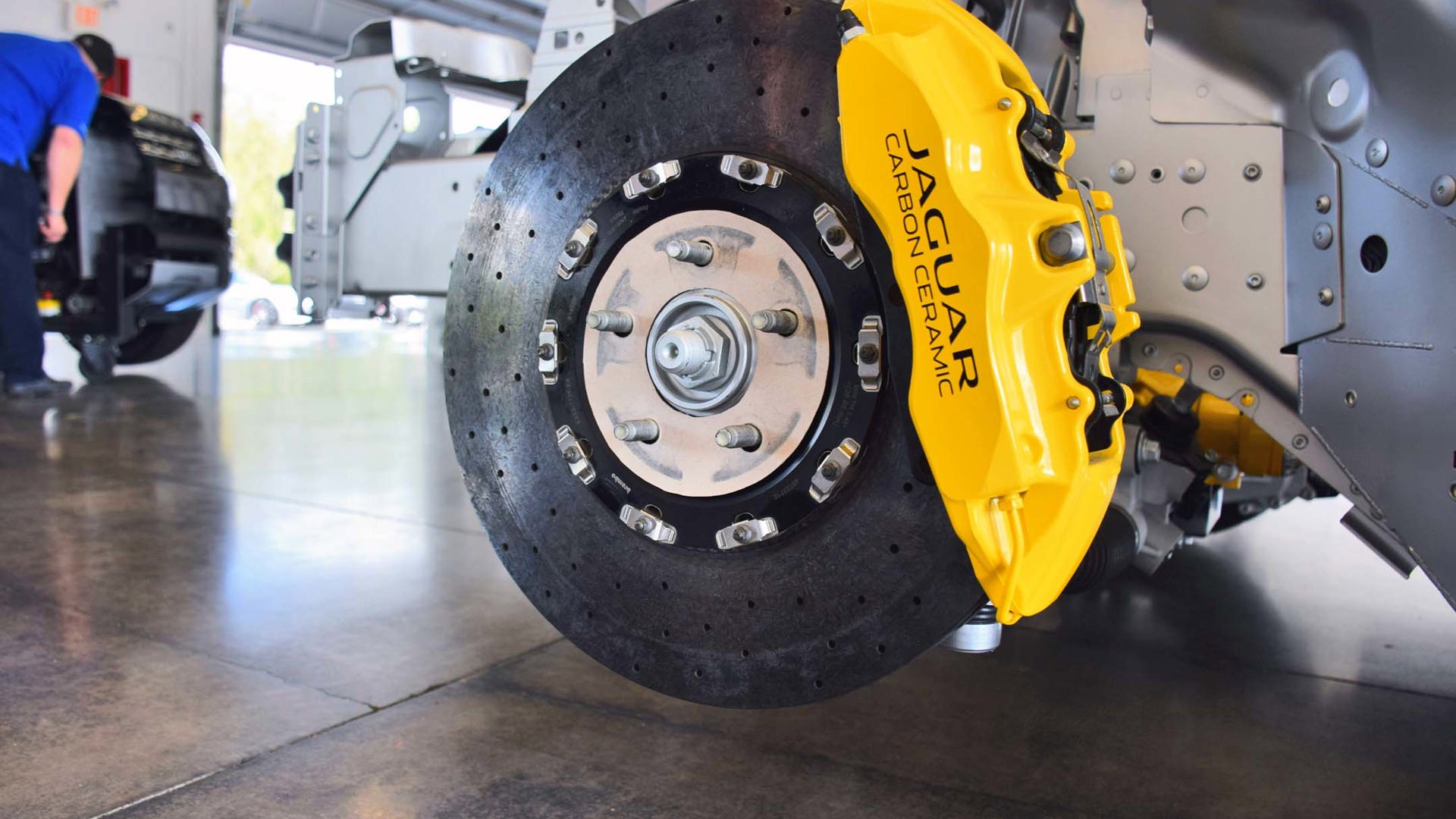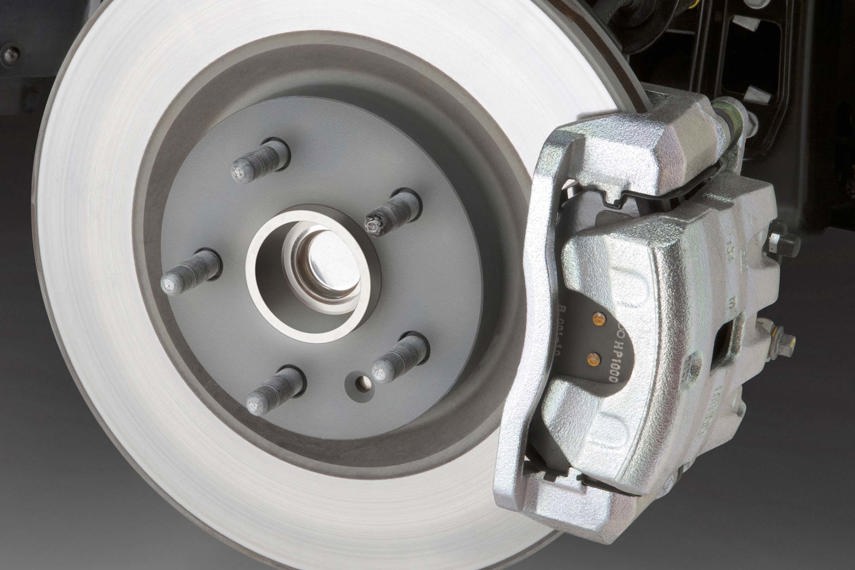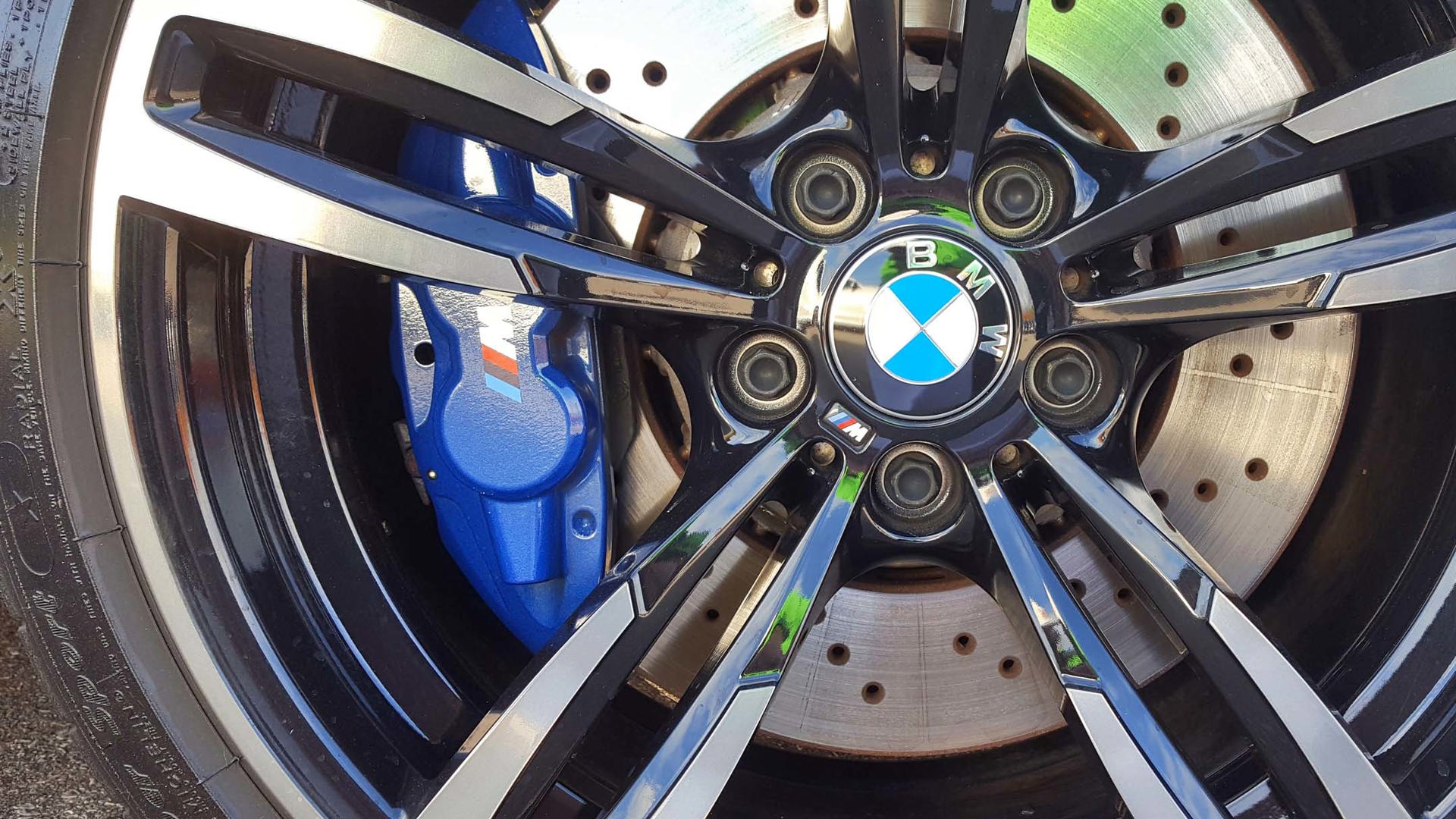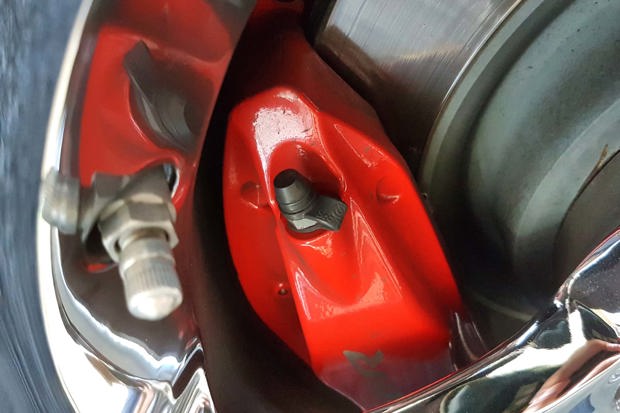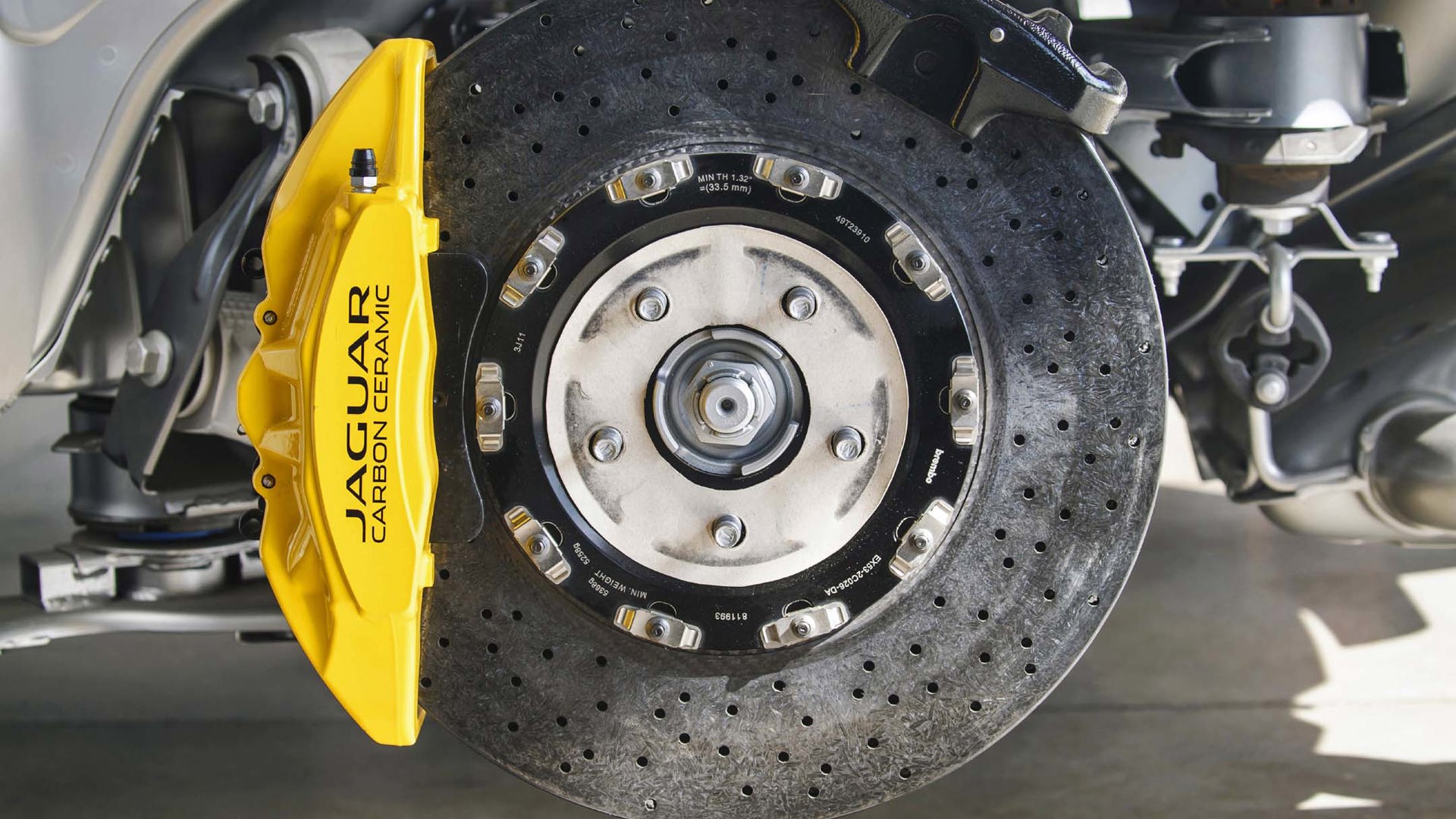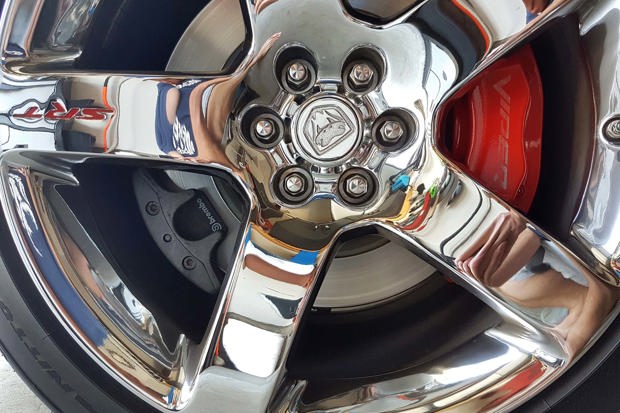On most vehicles, braking system components visible behind the wheels are rusty, dull, colourless, unattractive, and worthy of little second thought. But, on some vehicles, (often of the pricey, high-performance variety), visible braking system components are flaunted, showed off, colourful, and proudly displayed as a visual cue to the performance and capability of the model to which they’re fixed.
Below, we’ll take a look at the visible components of the automotive braking system, identify some key features and attributes they may offer, and see how to identify them when looking behind the wheels of your favourite high-performance ride.
Regular brakes

In regular cars, braking system components are built to a price point, and typically, to an unremarkable performance level. Usually, in a standard vehicle, you get a solid steel brake rotor behind each wheel, and a colourless, unfinished metal brake caliper mounted over top of that. The caliper squeezes the brake pads into the rotor when it’s time to stop, and doesn’t look so special doing it. These brakes are boring, and don’t warrant any special consideration.
Fancy brakes

Fancy braking systems are engineered to a higher level of performance and durability than regular brakes, with the intention of hustling go-fast cars down from speed, lickety-split. Fancy brakes are often intended for use on sportier, high-end rides that require a braking system better suited for the high temperatures and stresses of performance driving. For years, carmakers have been dressing up the visible parts of their fancy braking systems as a way to provide added styling, to generate some charisma, and to convey a sense of performance capability. Some of the neato-looking visuals characteristic of a fancy braking system are just for show, while others are highly functional.
Big fancy calipers

One of the very first clues that you’re looking at a fancy braking system is the presence of a painted brake caliper. This is the part that slips over the brake rotor, and squeezes brake pads into said rotor when stopping power is applied via the pedal. Painting the calipers does not add any actual performance to the braking system, though it does provide a great visual impact when viewed behind the wheel of a moving car, where the bright colour makes the caliper “pop” and often appear to be floating behind the wheel. Some automakers use a signature caliper colour, like blue for BMW’s “M” division and on the Ford Focus RS, red for various high-performing Dodge / SRT models, and orange for high-performing models from Lexus, Jaguar and more.
Sometimes, the calipers have a decal applied over the painted surface, like BMW’s “M” logo, Mercedes-Benz’s AMG logo, or the word “BREMBO”.
Brembo brake calipers

Brembo is an Italian company that makes kick-ass brakes for cars, motorcycles, and racing. Some performance road cars have a Brembo braking system from the factory, often identified by the word “BREMBO” decaled over the painted surface of the (usually red) calipers. Brembo has a reputation for powerful and durable braking systems designed for use in motorsports, and supplies brake systems to numerous automakers. You’ll find Brembo brakes on anything from a $30,000 Hyundai Genesis Coupe to a million-dollar Pagani supercar to a priceless Formula 1 car, and anything in between. Sometimes, Brembo brake calipers don’t bear the BREMBO name, and instead, are decaled up with the vehicle’s own performance brand or logo, like some models from Lexus, Cadillac, Nissan, Ferrari, Dodge, and others.
Calipers with nipples
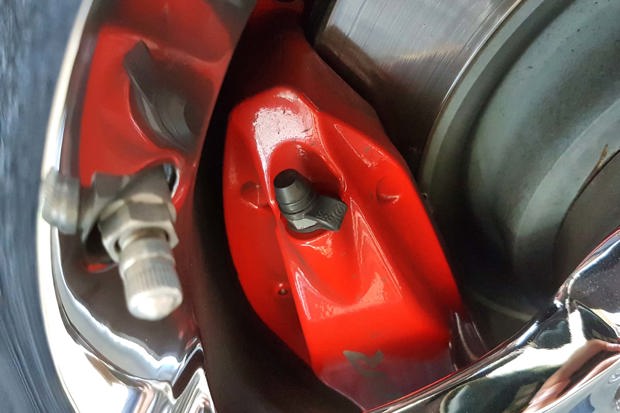
Like people, some brake calipers show off exposed nipples. In the context of a performance vehicle, these nipples (which are technically called “bleeder screws”, but please, call them nipples), facilitate easy hookup to specialized equipment that changes brake fluid. This makes it easier and faster to bleed the brakes, which removes air from the system, or to perform a brake fluid flush. Driving fast in a motorsports setting gets the fluid in a vehicle’s braking system extremely hot, which can ruin it. This is why many drivers change brake fluid after a track day or race. Having bleeder screws, er, nipples, easily accessible on the caliper makes it easy to do, without removing the vehicle’s wheel.
Rotors with holes

Sometimes, brake rotors, which are the shiny steel discs visible behind the vehicle’s wheel, are covered in a pattern of small holes. These are called drilled or cross-drilled rotors. The small holes usually go all the way through the brake rotor or disc, allowing hot gasses that form between the brake pad and rotor to escape. In turn, this allows the brake pad to generate more “bite” into the rotor surface, and keeps the braking system cooler during performance driving. Drilled or cross-drilled brake rotors are common on many high-performing cars, and can be added to virtually any car as an aftermarket replacement part to increase braking system performance.
Rotors with slots

Some brake rotors have slots instead of holes. These look like little notches or “cuts” in the steel surface of the rotor, usually in a straight or slightly curved line. The slots in a slotted brake rotor work towards a similar goal as the holes in a cross-drilled rotor: letting hot gasses dissipate faster, keeping the brakes cooler, and improving overall performance. According to some experts, slotted rotors are superior to drilled rotors in wet conditions, since they let water evacuate the brake rotor surface more effectively.
Brake rotors that don’t shine
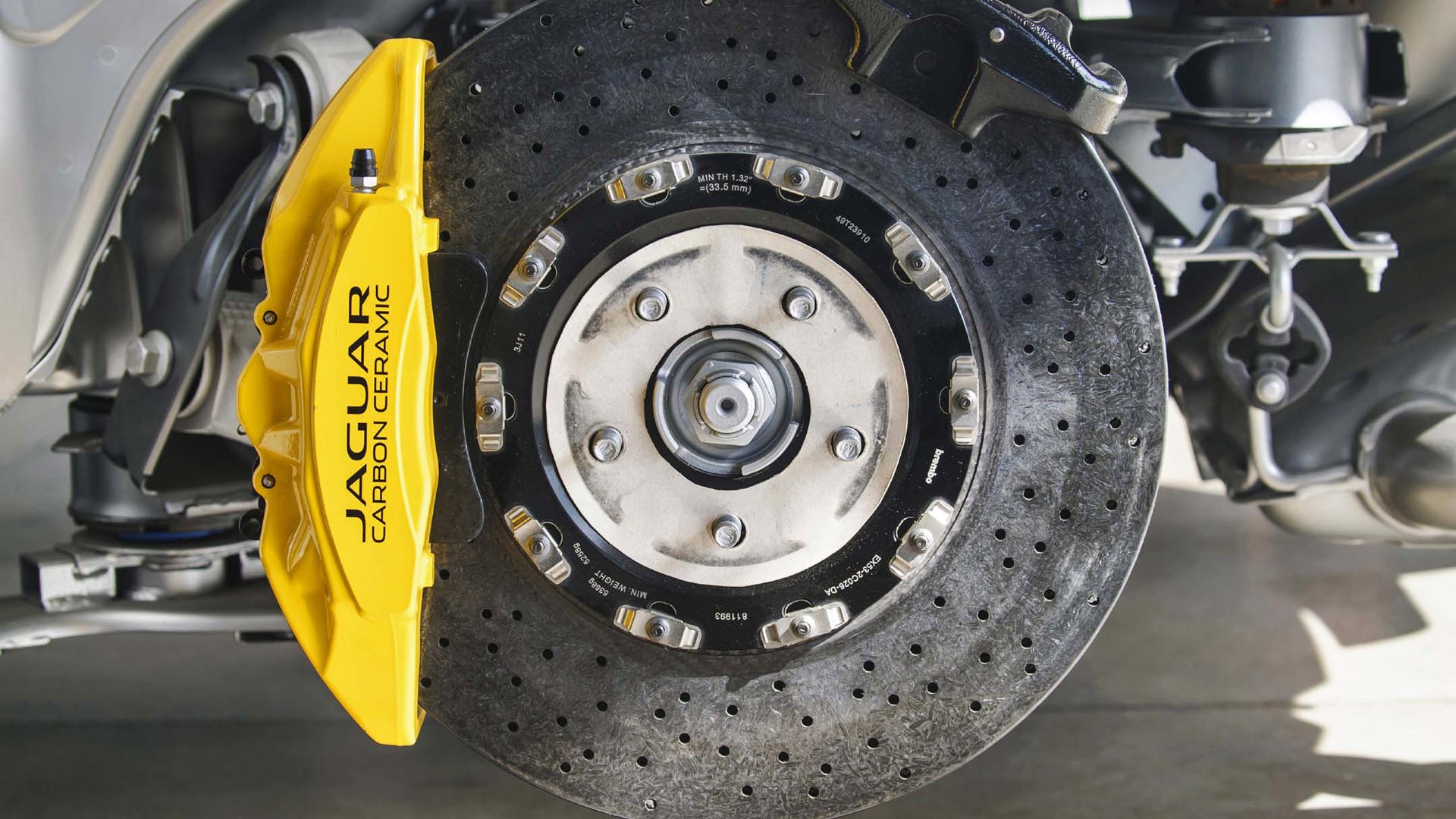
Some brake rotors on ultra-pricey rides aren’t made of steel at all. Cars including the Corvette Z06, Porsche 918 Spyder and Jaguar F-Type R instead offer supercar brake rotors, made from exotic carbon ceramic. This material is very light, rotors made of it weigh much less than steel ones, keeping the vehicle’s weight down. They’re also not shiny like steel rotors, meaning they have a unique matte finish and slightly speckled look that gives them away. Not sure if the brakes you’re looking at are carbon ceramic? Just look more closely – often times, a carbon ceramic braking system is advertised with a special label on the vehicle’s caliper.
Carbon-ceramic rotors can be drilled, just like steel ones, but they may not be. These exotic rotors also resist degradation of performance and warping typical of steel rotors in extreme use, when brake system temperatures soar. Carbon-ceramic brakes are designed for extreme duty in a racetrack setting – and their performance and “feel’ actually improves the hotter they get. Finally, since they’re not made of steel, carbon ceramic brakes won’t rust, like the ones on your Civic.
Exotic technology and materials command an exotic price tag though, and some high-end cars offer a carbon ceramic brake upgrade at a price that can reach $10,000 or higher.
Two calipers on one rotor
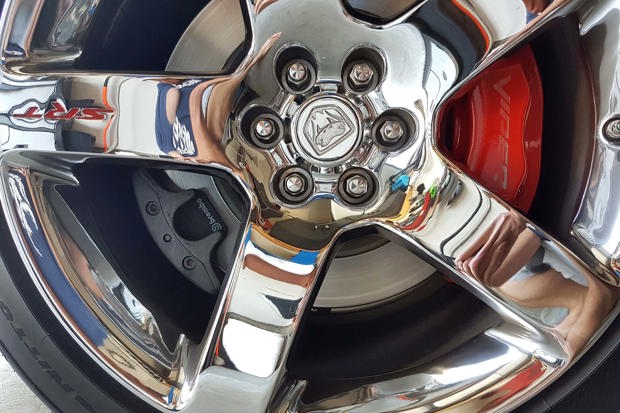
Some cars have two visible calipers on a single rear brake rotor: usually, one large caliper, and one much smaller, thinner one. Though many folks assume that two calipers are better than one, and that this two-caliper business is to increase braking system performance, that’s not the case: the smaller caliper in this situation is simply the parking brake, and only engages when drivers pull the handbrake lever, to fix the vehicle when parked, or to do wicked skids.
